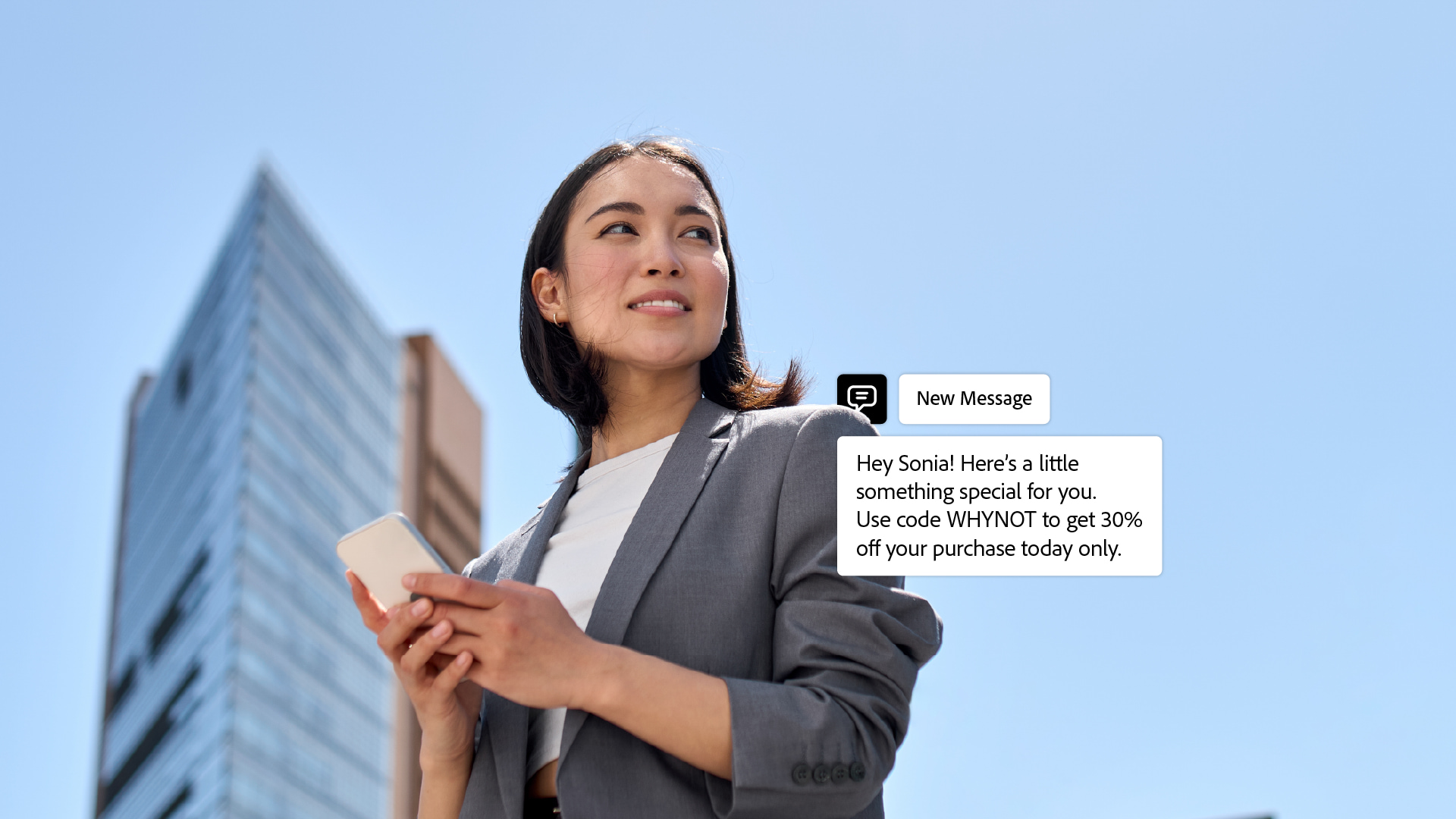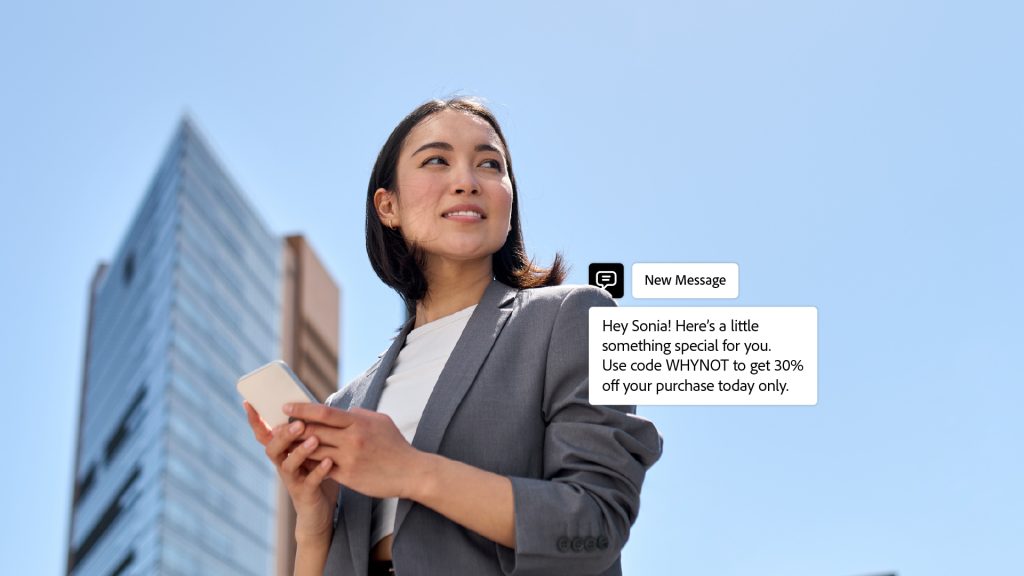The future of engagement is in your customers’ hands (or pocket) by Adobe


Today’s customers don’t separate their lives into channels, and they don’t expect brands to either. They want experiences that feel relevant and personal, whether that’s confirming a delivery, getting a reminder about an appointment, or receiving an offer they actually care about.
Imagine a shopper who adds items to their cart but never checks out. Hours later, the reminder email arrives, but by then it’s buried in a crowded inbox. The opportunity to recapture their attention has passed. This is the challenge marketers face today: timing and trust matter just as much as the content itself.
For marketers, the challenge is not in deciding which channel to use in isolation. It’s in orchestrating connected journeys that reflect customer preferences across every touchpoint.
When journeys connect, customers respond
When brands get this right, the impact is measurable. According to McKinsey, omnichannel customers shop 1.7 times more than those who engage on a single channel. That difference underscores a simple truth: value comes from the overall experience, not from any one channel on its own.
Messaging is where customers expect brands to show up
Customers are making their expectations clear: they want to connect with brands in the same seamless, familiar ways they already communicate in their personal lives. Messaging is no longer a side channel; it’s quickly becoming the default. Kantar research shows that 74 percent of online adults say they want to be able to communicate with businesses in the same way they communicate with friends and family.
The adoption trend reinforces that shift. Messaging apps generate hundreds of millions of downloads every month, and WhatsApp continues to lead the category. In June 2025 alone, WhatsApp was downloaded more than 57 million times globally. With well over two billion active users across 180 countries, it represents both massive reach and a level of trust that few other digital channels can match.
For marketers, this is not a call to abandon email, SMS, or push. Those remain essential. The opportunity lies in weaving messaging into orchestrated journeys, creating interactions that are more immediate, more visible, and ultimately more relevant.
Choosing the moments that matter most
Adding messaging to the customer journey is not about sending more messages. It is about choosing the moments where speed, visibility, and trust matter most. Omnichannel engagement works best when every touchpoint feels timely, relevant and welcome.
Imagine reminding a loyal customer that they are one purchase away from unlocking a new rewards tier. If the message sits in an inbox for days, the moment is lost. But when it appears instantly in a messaging app they check throughout the day, the impact is different. The customer feels seen, and the brand earns attention.
Those moments can vary by region. In places like Brazil, India and Indonesia, WhatsApp is often the primary channel for both customers and brands. In the U.S. or Canada, it may work best as a high-trust option for transactional updates, rather than broad marketing outreach. Using journey data and regional insight helps marketers decide where messaging adds value and ensures the channel is used in ways that feel authentic rather than excessive.
Adding channels should not add complexity
As messaging becomes a larger part of the customer engagement mix, the challenge for marketers is to keep the journey connected and coherent. Adding new channels should not mean adding more complexity. The opportunity is to manage orchestration from a single place, so that every message feels coordinated and every touchpoint reflects a unified view of the customer.
With Adobe Journey Optimizer, WhatsApp can become a native part of the journeys marketers are already building. That might mean a welcome flow for new customers, a re-engagement series for those who have lapsed, or a follow-up after a purchase. Messages can be triggered by real-time actions, tailored using customer profiles, and kept consistent across touchpoints — all without adding operational complexity.
The next step: Putting messaging to work in your strategy
The shift toward messaging-first engagement is well underway, and the opportunity for marketers is clear. The future of customer experience will not be defined by any single channel but by how well they come together. With messaging now at the center of how people live and communicate, the next step is putting it to work in a way that serves both customers and brands.
Every organization will find different points in the journey where messaging makes the most impact. For some, it may be in helping customers stay informed with service updates. For others, it may be in re-engaging shoppers who have drifted away, or reminding loyal customers of rewards they have earned. The key is to think strategically about where messaging complements the channels already in use, creating a journey that feels seamless rather than fragmented.
A new eBook explores this opportunity in greater detail, showing how the WhatsApp channel can be used inside Adobe Journey Optimizer to strengthen omnichannel strategies without adding complexity. It highlights examples of where messaging makes the most impact and offers practical guidance for identifying the moments that matter, building on existing journeys and moving step by step toward more connected engagement.
Download the eBook today to see how Adobe Journey Optimizer and WhatsApp can help you design journeys that connect with customers in the moments that matter most.







Recent Comments